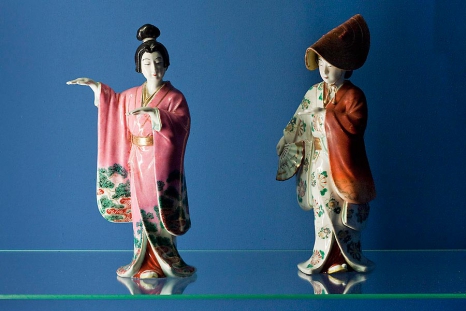
Still life with Japanese doll
January 22 – February 27, 2011
Curator: Anna Król
The exhibition is part of a series of exhibitions on the reception of Japanism and its influence on Polish art.
This time he takes up the problem of the Japanese prop, which appears in the paintings of painters of the turn of the 20th century. The title doll becomes a pretext for showing also other characteristic Japanese objects appearing in the paintings of Polish artists. In their compositions, the painters present, in addition to the doll, umbrellas, kimonos, ceramics, woodcut, lanterns, fans.
Ningyō – Japanese doll is one of the most intriguing objects of Japanese culture, appearing very often in many works of European artists since the second half of the 19th century. Prominent Polish artists such as Boznanska, Pankiewicz, Karpinski, Wyczolkowski and many others succumbed to the magic and ambiguity of the object. Artists were supported in this new fascination by a true expert and admirer of the Land of the Cherry Blossom, Feliks “Manggha” Jasieński. Leading Polish artists drew inspiration from his “prop room” (even called a museum) – painting exotic objects, weaving them into the narrative and symbolism of the paintings. Models posing in kimonos with a Japanese umbrella, muted interiors, still lifes with clearly marked Japanese trinkets – show not only the style of painting, but the lifestyle and fascination with the Orient of that period. Japanese objects woven into the compositions introduce new symbolism, new meaning to them.
The exhibition is built around key works, exhibited include Europa jubilans – the most enigmatic painting by Jozef Mehoffer, from the collection of the Lviv Art Gallery. A seemingly generic scene – a maid’s rest while working in a collector’s apartment – transforms into an allegorical story, even an intercultural dialogue, to which – to our surprise – we do not have such an obvious key.
In addition to outstanding paintings, the exhibition features authentic Japanese objects. Fans, faience figurines, ceramics, woodcuts, armor and kimono – complete the picture of Japanese culture. With their extraordinary qualities and exotic decoration, they approximate the atmosphere of the era and the fascination to which Polish artists of the turn of the century succumbed.
The presented Polish paintings, due to the strength of their artistic impact and the novelty of the means used, can be compared with the best examples of European Japanism.
The exhibition is accompanied by a catalog-album (in Polish and English), which is the first monograph of this such an inspiring and timely motif.
Exhibition prepared by the Manggha Museum of Japanese Art and Technology.
Coordination and information: Anna Szlazak aszlazak@muzeum.stalowawola.pl